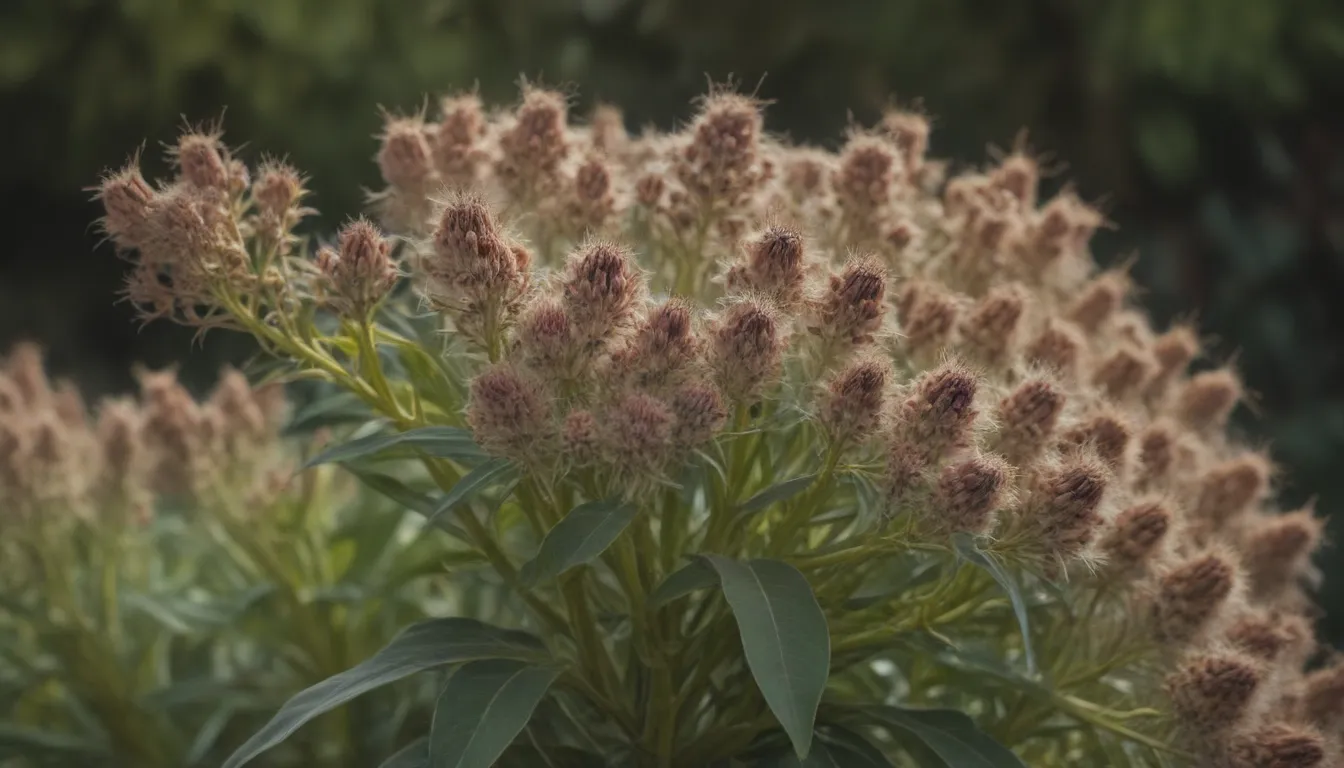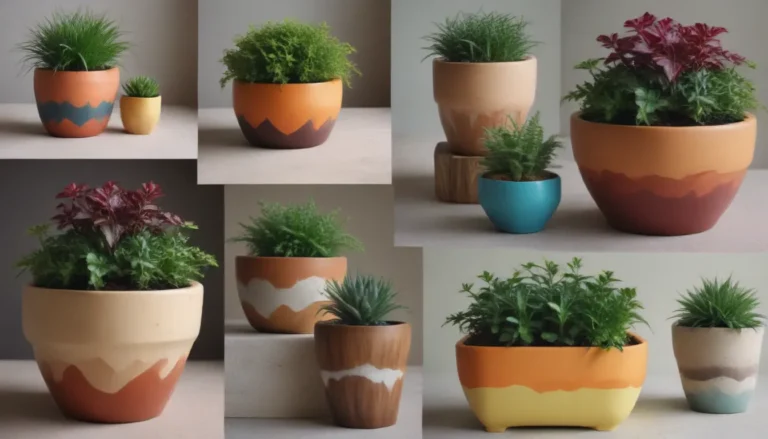A Comprehensive Guide to Growing and Caring for Common Milkweed

If you’re a fan of butterflies, especially the majestic monarch butterfly, then you’ll want to consider adding common milkweed (Asclepias syriaca) to your garden. Not only is this native herbaceous perennial a favorite of butterflies, but it also plays a crucial role in supporting the life cycle of monarch butterflies, serving as the sole host plant for their egg-laying. Without milkweed, there would be no monarch butterflies.
Growing Common Milkweed
- The Spruce / Adrienne Legault
Common milkweed is a fast-growing plant that can reach heights of two to four feet. It boasts narrow vertical growth and thick, oblong green leaves that can grow up to eight inches in length. If you’re looking to grow common milkweed, you can either plant seedlings in early spring after the danger of frost has passed or direct-sow seeds in the ground in late fall. Once established, common milkweed spreads rapidly through self-seeding, so be mindful of removing seed pods if you want to control its growth.
In the late spring to midsummer, fragrant clusters of pink-purple flowers adorn common milkweed plants, adding beauty to any garden. It’s important to note that the leaves and sap of milkweed are toxic to humans, pets, and livestock, except for monarch butterflies. This toxicity makes it undesirable for farmers, who often try to eradicate it from their pastures.
Common Milkweed Care
Taking care of common milkweed is relatively easy, as long as you provide it with the right conditions to thrive. Here are some essential care tips to keep your common milkweed healthy and flourishing:
Light
Common milkweed prefers full sunlight and thrives in areas where it receives six to eight hours of sunlight per day. Placing it in an open area with plenty of sun exposure will help promote robust growth and abundant blooms.
Soil
This plant does well in dry to medium-average, well-drained soil. It can tolerate dry conditions, infertile soil, and even rocky terrain. Common milkweed prefers soil with a pH range of 4.8 to 7.2, so make sure to provide it with suitable growing conditions.
Water
Common milkweed is drought-tolerant and typically does not require regular watering. In the driest conditions, water deeply, giving the plants one to two inches of water, and then wait until the top inch of soil is dry before watering again. Overwatering can lead to fungal issues, so water sparingly.
Temperature and Humidity
This plant can tolerate a wide range of temperatures and humidity levels. However, it is native to the eastern parts of the United States and may struggle in extreme heat or humidity. Common milkweed goes dormant in the winter, so provide it with appropriate conditions to support its growth.
Fertilizer
Common milkweed does not require fertilization, as it can thrive in poor soils. Avoid using fertilizers on this plant, as it may not respond well to additional nutrients.
Types of Related Milkweed Plants
In addition to common milkweed, there are many other types of milkweed plants that you can incorporate into your garden to support monarch butterflies. Some popular varieties within the Asclepias genus include:
- Butterfly weed (Asclepias tuberosa)
- Swamp milkweed (Asclepias incarnata)
- Showy milkweed (Asclepias speciosa)
- Purple milkweed (Asclepias purpurascens)
- Whorled milkweed (Asclepias verticillata)
- Sandhill milkweed (Asclepias humistrata)
These different types of milkweed plants vary in height and bloom colors, offering a diverse array of choices for your garden.
Propagating Common Milkweed Plants
Propagating common milkweed can be done through taking cuttings, which is often easier than dividing rhizomes. Cuttings allow you to create new plants quickly, making it ideal for establishing a butterfly garden. Here’s how you can propagate milkweed plants via cuttings:
- Choose a healthy stem from the parent plant.
- Cut a six to eight-inch stem at a 45-degree angle.
- Remove the lower leaves from the cutting.
- Place the cutting in a container with rooting hormone and water.
- Keep the cutting in a warm, sunny location until roots develop.
- Once roots have formed, transplant the cutting into a larger container or directly into the garden.
By following these steps, you can easily propagate common milkweed plants to expand your garden and attract more butterflies.
How to Grow Common Milkweed From Seed
Common milkweed plants produce warty seed pods that burst open in the fall, scattering their seeds in the wind. If you want to grow common milkweed from seed, you can either let the plant self-seed in your garden or start seeds indoors. Here’s how to grow common milkweed from seed:
- Collect seed pods in the fall after they have dried.
- Scatter the seeds in a weed-free area of your garden.
- Cover the seeds with no more than a quarter-inch of soil.
- Alternatively, start seeds indoors in early spring for a head start.
By following these steps, you can successfully grow common milkweed from seed and enjoy its beautiful flowers in your garden.
Common Pests & Plant Diseases
Like any plant, common milkweed is susceptible to pests and diseases that can affect its health. Some common pests and diseases that may impact common milkweed include:
- Milkweed bugs
- Milkweed beetles
- Aphids
- Whiteflies
- Scale insects
- Spider mites
- Thrips
- Leaf miners
To address pest infestations, avoid using pesticides that can harm beneficial insects like butterflies. Instead, manually remove pests by hand or with a gentle spray of water. Keep an eye out for snails and slugs, especially on young milkweed plants, and use snail bait to control them without harming monarch butterflies.
Fungal issues like leaf spot, verticillium wilt, and root rot can also affect common milkweed. Trim infected leaves and branches to prevent the spread of disease, but these fungal issues may be challenging to overcome.
When planting common milkweed, be mindful of its aggressive spreading nature and consider containment options to prevent it from overtaking other plants. Creating a designated butterfly garden or planting common milkweed in a confined area can help manage its growth.
In Conclusion
Common milkweed is a vital plant for supporting monarch butterflies and adding beauty to your garden. By following the care tips outlined in this guide, you can successfully grow and maintain common milkweed plants in your landscape. Whether you’re a seasoned gardener or new to planting milkweed, incorporating this native perennial into your garden will benefit both butterflies and pollinators alike.
Remember, a small patch of milkweed can make a big difference in supporting monarch butterflies, so consider adding this essential plant to your garden today. With the right care and attention, common milkweed can thrive and provide habitat for these iconic butterflies for years to come.
If you encounter any challenges or have questions about growing common milkweed, don’t hesitate to reach out to your local gardening expert or extension service for personalized advice. Happy gardening!
References:
– Milkweed. ASPCA.
– James, David G. A Neonicotinoid Insecticide at a Rate Found in Nectar Reduces Longevity but Not Oogenesis in Monarch Butterflies, Danaus plexippus (L.). Insects, 10(9): 276, 2019. doi:10.3390/insects10090276.





